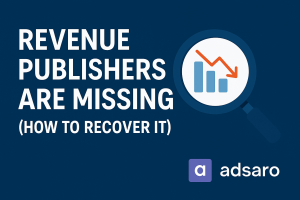Dark patterns in digital ads refer to deceptive design strategies that trick users into taking unintended actions. These tactics exploit psychological biases to drive clicks, sign-ups, or purchases, often at the expense of consumer trust. While persuasive advertising is a standard practice, the ethical line between persuasion and deception is increasingly blurred.
This blog explores dark patterns in digital ads, their impact on users, and how brands can adopt ethical advertising strategies.
What Are Dark Patterns in Digital Ads?
Dark patterns in digital ads are manipulative design techniques that deceive or coerce users into taking actions they may not have intended. These tactics can appear in ad placements, pop-ups, misleading buttons, or hidden costs.
Some common examples include:
- Misleading CTA buttons – Ads that disguise cancel buttons or make the purchase option more prominent.
- Sneaky auto-renewals – Subscription services that don’t clearly inform users about recurring charges.
- Hidden fees – Extra costs revealed only at the last step of a transaction.
- Forced continuity – Free trials that automatically convert into paid subscriptions without clear consent.
The Psychological Tactics Behind Dark Patterns in Digital Ads
Dark patterns in digital ads leverage human psychology to increase engagement and conversions. These tactics play on emotions such as urgency, fear of missing out (FOMO), or confusion to influence decisions.
Some psychological triggers used include:
- Scarcity & urgency – “Only 2 left!” messages create artificial urgency.
- Social proof – Fake testimonials or exaggerated user numbers.
- Guilt-based tactics – Pop-ups with “Are you sure you want to miss this deal?” messaging.
While these strategies may boost short-term results, they damage long-term customer trust and brand credibility.
Case Studies: Brands That Faced Backlash for Dark Patterns
Several well-known brands have faced scrutiny for using dark patterns in digital ads. Here are a few cases:
- Amazon – Accused of making it difficult for users to cancel Prime subscriptions.
- Meta – Criticized for complex privacy settings that make it harder for users to opt-out of data tracking.
- Adobe – Faced backlash for hidden cancellation fees in subscription plans.
- LinkedIn – Previously called out for deceptive email invitation tactics.
- Ticketmaster – Frequently criticized for hidden fees that appear at checkout.
These cases highlight the consequences of using dark patterns, including legal penalties and loss of consumer trust.
The Ethical Approach
To maintain credibility and ensure compliance with advertising regulations, brands should focus on ethical advertising strategies. Here are key ways to avoid dark patterns in digital ads:
| 1. Transparent Pricing and Policies | Clearly display all costs upfront. Provide straightforward cancellation options. |
| 2. Honest and Clear Call-to-Actions | Avoid misleading buttons or deceptive messaging. Use precise language to indicate user actions. |
| 3. Privacy-First Approach | Give users control over data sharing and tracking. Provide easy opt-out options without hidden steps. |
| 4. User-Friendly Ad Experience | Ensure pop-ups and interstitial ads are easy to close. Maintain clear distinctions between sponsored and organic content. |
| 5. Compliance with Advertising Regulations | Adhere to guidelines from regulatory bodies like the FTC (Federal Trade Commission) and GDPR (General Data Protection Regulation). |
The Future of Ethical Advertising
As consumers become more aware of manipulative marketing techniques, regulatory bodies and advocacy groups are increasing scrutiny on brands employing dark patterns. Ethical advertising not only protects users but also fosters long-term brand loyalty.
Companies that prioritize transparency and user-centric experiences will have a competitive advantage in the evolving digital landscape. By eliminating deceptive tactics, brands can build trust and credibility with their audience.
Moving Beyond Dark Patterns
Dark patterns in digital ads might generate short-term gains, but the long-term consequences—including legal risks and reputational damage—far outweigh the benefits. By focusing on ethical advertising, brands can enhance customer relationships and ensure sustainable success.
To stay ahead in digital marketing, advertisers must recognize the fine line between persuasion and deception. Ethical advertising isn’t just a regulatory requirement—it’s a business imperative.








Leave a Reply